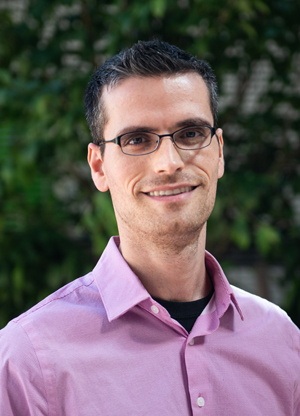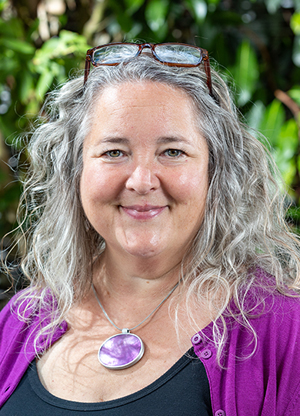CoMotion Innovation Gap Fund Awardees – Fall 2024
This cycle 22 teams submitted letters of intent and 17 made it to the final pitch with five teams in the Engineering track and 12 in the Life Science track. The competition was high in both the number and quality of teams and not all worthy projects could be funded. Five teams received full $75,000 awards, two teams $50,000 awards, two teams $25,000 awards. Also, two teams received $10,000 and one team $5,000 to support additional customer discovery and market research efforts so the teams can address critical issues raised by reviewers and successfully compete in future rounds of the CoMotion Innovation Gap Fund and other commercialization focused grants.
- Jessica Jenness, Psychiatry & Behavioral Sciences

- Adam Krynicki
- Ti Zhao
- Julie Kientz
- Sean Munson
- Elin Bjorling
Depression is commonly experienced by many teens and young adults; however, adherence to evidence-based depression treatment is low, ultimately leading to high costs to healthcare systems and patients. We have developed a treatment companion app, ActivaTeen, that can improve treatment engagement, treatment outcomes, and the cost-effectiveness of administering depression treatment. Several rounds of iterative user testing have demonstrated the app design is acceptable, usable and engaging for teens with depression and clinicians who deliver depression treatment and is superior to other options on the market, such as self-service treatment apps that have pervasive challenges with maintaining user engagement.
- James Carothers, Chemical Engineering
- Ryan Cardiff, Chemical Engineering

- Roï Eisenkot
- Scott Brennan
- Jeff Canin
The chemical industry relies on fossil fuels as a feedstock, leading to considerable carbon emissions and environmental degradation. In 2021, the chemicals industry was responsible for 6% of the total global emissions. This alarming contribution to greenhouse gas emissions drives the growing interest in decarbonization and the shift towards sustainable alternatives. C1 Bio is developing an innovative bioprocess for sustainable chemical production utilizing a unique class of carbon-upgrading bacteria that can convert industrial waste streams into valuable chemicals.
- Eric Seibel, Mechanical Engineering

- Judy Bridges
- Dave Flotree
- Tiffany Xu
Despite gastric cancer being a top 10 killer in USA and a top 5 killer globally, screening is rarely done due the needs for heavy sedation, specialist MDs to take a biopsy and low sensitivity due to less than 1% of the stomach being randomly sampled. Our proposed solution is to remove the specialist MDs (gastroenterologist and anesthesiologist) from the procedure that acquires gastric samples for diagnosis, reducing cost, time, and inconveniences for the patient by using our novel waterjet based cell sampling device which samples cells from the entire stomach surface resulting in a fast, easy and highly sensitive procedure allowing more cases of gastric cancer to be caught early.
- Brian Beliveau, Genome Sciences
- Conor Camplisson, Genome Sciences

- Jennifer McCullar
- Hana Gage
- Damian Madan
Recent advancements in single-cell and spatial biology have enabled high-resolution mapping of molecular structures in tissues, but researchers still struggle to effectively map cell types in tissue samples due to existing spatial biology methods that are complex, require expensive instrumentation, and are inaccessible to many labs, hindering the ability to understand cell interactions critical for disease research and therapeutic development. Our solution is a bright, easy-to-use reagent kit for labeling cell types in tissue samples with a single round of imaging that eliminates the need for costly automated instruments, reduces expenses, and improves throughput for both research and drug development.
- Blake Hannaford, Electrical & Computer Engineering
- Andrew Lewis, Electrical & Computer Engineering

- Judy Bridges
- Mike Franz
- Pavan Kumar
Compromised airways are the second most common cause of potentially survivable death in military combat. The gold standard of care is endotracheal intubation, but this procedure requires significant training and risks further trauma if done improperly, which happens in almost 35% of intubations forcing many medics to use less effective approaches with other drawbacks. To solve these shortcomings, we are developing a device that automatically intubates by growing through a patient’s mouth into their airway without input or external force from the user allowing the airway to be quickly opened for life saving procedures without the high risk of further trauma.
- Paul Yager, Bioengineering

- Roï Eisenkot
- Scott Plank
- Sujatha Kumar
- Alexander Yan
Inflammation, once a hidden health challenge, is increasingly recognized as a root cause of chronic disease and accelerated aging in a wide range of debilitating conditions, including cardiovascular disease and autoimmune disorders. Management of inflammation is increasingly the basis of both preventive and therapeutic action but is difficult to monitor. Using our inexpensive paper microfluidics platform with AI analytics, we provide individuals personalized, actionable data to prevent inflammation before it manifests in the form of irreversible health complications, and to manage conditions that have already developed.
- Katharina Reinecke, Computer Science and Engineering
- Nigini Oliveira, Computer Science and Engineering

- Laura Dorsey
- Jai Jaisimha
- Trisha Lowe
Researchers and designers in industry and academia often struggle to get access to geographically and demographically diverse study participants. This lack of diversity generates biases in technology design and scientific knowledge, leading to detrimental societal outcomes, such as AI tools that cannot correctly identify black people or security messages that fail to be understood by many elderly people. LabintheWild has developed a research approach to recruit unprecedentedly large and diverse study samples through the social web. Equipped with such datasets, researchers and designers can develop technology products that are equally usable and useful for everyone.
- Dayong Gao, Mechanical Engineering
- Tejoram Vivekanandan

- Forest Bohrer
- Molly Klein
- Vasantha Kostojohn
- Lillian Tran
- Nana Wang
- Pavitr Agarwal
The simultaneous monitoring of bilirubin, hemoglobin and oxygen saturation levels in newborns is essential to ensure appropriate management and treatment of jaundice, a potentially fatal condition if not treated. The current method of measurement of bilirubin and oxygen levels involves painful blood sampling which suffers from multiple long-term consequences like infection at the sampling site, osteomyelitis (though in rare cases), blood loss, etc. Although current non-invasive methods (BiliCheck™20, JM-105™21, MBJ-20 etc.) have been established as alternatives to repeated blood samplings for bilirubin and oxygen measurement, they suffer from certain inherent limitations that restrict their usage in widespread hospital settings. Luminovah offers an innovative, non-invasive solution for accurately measuring blood components, providing significant value to both healthcare providers and patients. Our device uses light wavelengths between 450 and 650 nm on the nail bed to predict blood components based on their spectral response.
- Lee Bockus, School of Medicine: Cardiology

- Roï Eisenkot
- Rob Mattewson
1.5 million heart failure patients—1 in 4 of those affected—experience debilitating symptoms caused by fluid retention, significantly impairing their health and daily lives. Current diuretic therapies lose effectiveness over time, resulting in escalating hospitalizations and contributing to over $100 billion in annual healthcare costs. Our innovative solution, the Lymphatix implantable pump, addresses fluid retention at its source by efficiently reducing lymphatic pressure. This offers sustained symptomatic relief, enhances organ function, and reduces hospitalizations, presenting a transformative opportunity for improving patient quality of life and reducing healthcare burdens.
- Jacques "Chris" Rudell , Electrical & Computer Engineering

- Judy Bridges
- Jon Eddy
- Xichen Li
Demand for the critical1-6GHz wireless band is high and is set to grow 10x in 5 years as autonomous vehicles, IoT, AR and VR increase the demand in an already congested wireless spectrum. However, this critical spectrum could be effectively doubled using full duplex communication to transmit and receive at the same time, except current commercial radio chips cannot overcome their own self-interference. We are developing a one-chip ratio solution combining advanced circuit design with AI algorithms to tune out self-interference in real-time allowing the valuable 1-6GHz spectrum to be doubled benefiting carriers, device makers and users. Beyond radios, the proposed solution can be widely applied in areas such as biomedical electronics and military radar.
- Ken Fujise, School of Medicine: Cardiology

- Roï Eisenkot
- Jonathan Heller
- Sandipan Mukherjee
- Mari Nakashima
- Uttariya Pal
- Lena Tanaka
Over 18% of patients who suffer heart attacks have normal low-density lipoprotein (LDL) levels so do not benefit from statins and other current therapies to reduce atherosclerosis, the buildup of plaque in the arteries which causes heart attacks. We have developed a novel drug to protect against recurrent events in patients who experience heart attacks while maintaining optimal low-density lipoprotein (LDL) levels. Our small-molecule compound targets fortilin, a protein we discovered that is linked atherosclerosis, the primary cause of heart attacks. Currently, no drugs on the market or in clinical development specifically address this patient segment. This innovative treatment has the potential to transform the clinical management of this underserved patient population.
- Michael Bailey, Applied Physics Laboratory

- Lisa Norton
- Michael Burlin
- Carey Kloster
Humans wait in pain for their kidney stone to pass or require surgery. Pets have it worse. Surgery is much more morbid as the tools are not sized for pets and the cat ureter is much more fragile to surgery. There are fewer experts to do the surgery and pet owners must opt to pay for the surgery, usually requiring travel, or euthanize their pet. Validated in recent pilot studies, our ultrasound technology can be used to look for stones, and then immediately break and facilitate passage of the stones. Stones will be treated in one visit for one cost without overnight stays for recovery greatly lowering treatment cost and increasing pet survival.